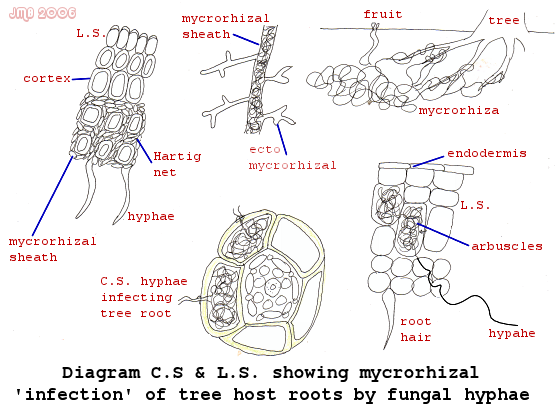|
Horn Of Plenty
Mycrorhiza
|

|
Mycrrorhiza |
The growing body is classed as an ectomycrorizal mycelium and lives in symbiotic communalism with beech and oak roots. The trees tend to be shallow rooted to accommodate the mycrrorhiza and will not grow properly without it. Infected roots commonly show a characteristic coralloid growth, in which the lateral roots fail to elongate and branch repeatedly, forming a swollen mass.
It partly penetrates the root passing no further than the endodermis, forming an intercellular network termed the Hartig net. The outer mantle, which replaces the piliferous (hairy) layer of the root, subsequently arises from this net. Hyphae take a proportion of the nutrients, carbohydrates and vitamins they assimilate, and in return supply and enable the tree to absorb other nutrients and water more efficiently. It is unknown process in tropical jungles. |
Collated by James M. Burton as part of H.N.D. course at Pencoed
Agricultural College. Taxanomical information correct as of 06:06:97.
